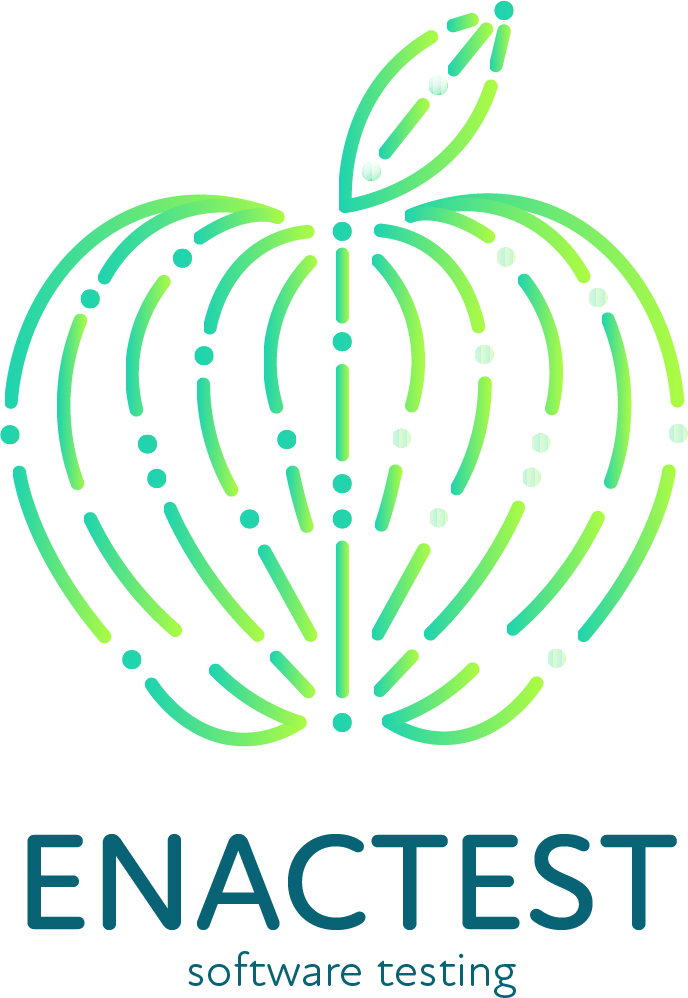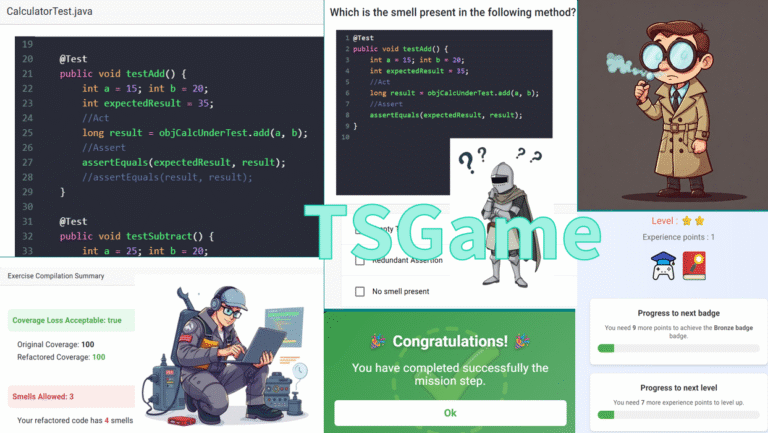 European Innovation Alliance for Testing Education - ENACTEST
European Innovation Alliance for Testing Education - ENACTEST
Software testing is a critical skill in today’s digital world, where failures can have far-reaching consequences. Recognizing this, the ENACTEST Project set out to address the challenge at its root: by improving how software testing is taught. The initiative aimed to make testing education more engaging, effective, and accessible—and it has delivered strong results.
As part of the project, the team developed a diverse collection of teaching materials, referred to as capsules. Each capsule focuses on specific aspects of software testing and is designed to meet the needs of modern learners and educators. These resources are already being implemented in classrooms and training programs, supporting both students and professionals in building stronger foundations in testing. Moreover, ENACTEST produced several scientific publications that explore innovative approaches to teaching and learning software testing. All these contributions offer valuable insights to both academic and professional communities, helping shape the future of education in this essential field.
A key strength of the project has been its close collaboration with the technology industry. From the beginning, industry partners provided feedback, shared real-world challenges, and helped ensure that the educational solutions developed were aligned with current workplace needs. This strong industry connection ensures that the project’s impact extends beyond its timeline, with partners expressing interest in continuing to innovate and support advancements in testing education.
 Gamification in Testing Teaching - GATT
Gamification in Testing Teaching - GATT
Software testing is an important topic in software engineering education, and yet highly challenging from an educational perspective: students are required to learn several testing techniques, to be able to distinguish which approach needs to be applied in a specific case, to evaluate the quality of their test suites, and to write maintainable test code. The reason that testing is not well done comes out from a skills mismatch between what is needed in industry, the learning needs of students and the way testing is currently being taught. Testing needs to allocate multiple cognitive resources in students which makes it challenging to learn and to teach as well.
The primary goal of this proposal is to design materials for teaching software testing, in form of games, that are aligned with industry needs and which take into account also the learning needs and characteristics of students.
In particular, the objective of the GAmification in Testing Teaching (GATT) project is to evaluate the benefits due to the anticipation of testing concepts to the first courses of the bachelor’s degree, in order to educate the students to the implementation of testable and high-quality code, and to present testing tasks as challenging and entertainment instead of boring and difficult activities by means of gamification approaches.
The evaluation of the benefits of these approaches will be measured both in terms of the quality of the generated test suites, and on the level of learning achieved by students, and on their level of engagement and satisfaction.
 Fit for Medical Robotics - Fit4MedRob
Fit for Medical Robotics - Fit4MedRob
Fit for Medical Robotics aims to address a major clinical, socioeconomical and humanitarian issue which stems from the demand of rehabilitation and personal care of people with reduced or absent motor, sensory, or cognitive functions due to injuries or congenital reasons. Current rehabilitation and assistive models offered by the national healthcare system lack in personalization and adequate continuum of care through-out all the phases of the rehabilitation process. Hence, excluding few exceptions nationwide, rehabilitation outcomes are typically unsatisfactory for the patients albeit expensive to the system.
In the last decade we have witnessed massive technological and scientific advances: the rise of wearable and implantable devices, of robotics into factories, AI and big data, phygital services, new materials and biomaterials, functional surgical techniques, all complemented by a significant reduction of the costs to afford them. This suggests that robotic rehabilitation/treatment represent a terrific opportunity to offer a better and more efficient health care, improve the quality of life of millions of individuals, potentially generating new jobs, contributing, in parallel, to knowledge – in the neuro-robotic fields – that may have important spill overs into many other sectors of technology, services and industry, such as more durable batteries, faster and more efficient microcomputers and algorithms, AI techniques, novel manufacturing techniques, and so on.
For all the above considerations, this is the right time.
We believe that healthcare and personal care robots can address the clinical, socioeconomical and humanitarian demand they are called for. Yet we believe that there is space for a substantial change in the legal and economic policies for which such robots/systems enter and are adopted by the Italian healthcare system(s), within a continuum of care paradigm. To this end it is imperative to set an interdisciplinary initiative including physicians (raising clinical questions), bioengineers (finding technical solutions) and social scientists (ensuring the solutions can be adopted.
Fit for Medical Robotics aims to cover technological, economical, legal and policy gaps currently present in the Italian healthcare system, that have prevented nationwide clinical adoption of first-class, patient specific therapies/treatments, robotic and digital treatments. Fit for Medical Robotics Objectives:
O1: Identifying the needs of the patients and rehabilitation practitioners/therapists, associated to specific selected pathologies, unmet with current robotic technologies.
O2: Tailoring the most advanced and ready-to-use (i.e., available today) families of rehabilitation, assistive, and occupational robots to the aforementioned needs and patients, and to neuroscientific-based protocols.
O3: Clinically assessing such available robots and thus provide conclusive clinical evidence of their efficacy when tailored to different target groups of patients/individuals.
O4: Performing a detailed cost-benefits analysis of such clinical assessments to assess their sustainability.
O5: Optimizing the clinical protocols to create specific paradigms for boosting the inclusion of healthcare and personal care robots in the medical, rehabilitation and occupational environments.
O6: Developing and promoting with policy makers and stakeholders the inclusion and democratization of sustainable robots and treatments in the national healthcare system also by developing specific economic, business and reimbursement models as well as by shaping them in a way that fit also in existing private law tools used in the welfare system.
O7: Preparing for the next generation of healthcare and personal care robots (and to robotics in general) by promoting the investigation of new hypotheses/ideas and technologies, including nanoengineered smart (bio)materials, and sustainable power sources attempting to overcome the main limits faced by current robots used as physical care givers.
Other funded projects
SMARTEDP4MOVE (Soluzioni software per la manutenzione efficiente, l'organizzazione e la riduzione di impatto ambientale delle flotte navali)
he purpose of this proposal is to define, prototype and test a modern decision support system dedicated to the management of naval fleets for passenger transport, aimed at energy optimization, fleet maintenance and logistics optimization; an immersive digital system for boat maintenance based on augmented reality technologies. In particular, thanks to the decision support system, through the analysis of historical data on consumption and weather, and the forecast analysis of weather conditions, it will be possible to make decisions on the optimal speed on each section in order to contain consumption; through the acquisition of plant operating data, it will be possible to use algorithms for predictive maintenance, contributing to a lower operating cost of the fleet and a lower number of hours of downtime of the ships; through the acquisition and predictive analysis of all the data relating to the purchase of seats (spaces) on board, it will be possible to define in real time the assignments of boats and on-board personnel to the different routes, in order to maximize the organizational efficiency of the material and human resources available; Through the real-time acquisition of all the data relating to the purchase and boarding of passengers, it will be possible to more efficiently plan the activities of the individual boats. Thanks to the adoption of an ecosystem perspective, the design of the software solution will be highly scalable and, basically, integrated into a user-friendly environment with a range of modular functionalities (commercial, management, sensors, etc.) selectively customizable on the basis of the preferences of the individual shipping companies. A specific demonstrator will be prototyped for fleet management applications. Thanks to the immersive maintenance system, on the other hand, it will be possible to remotely support an operator in maintenance activities. The maintenance activities carried out with the support of new generation Augmented Reality systems will allow the resolution of complex maintenance problems even for first-level operators.
Past funded research projects
- IESWECAN (PON01_01516 - MIUR - Informatics for Embedded SoftWare Engineering of Construction and Agricultural machiNes) (in collaboration with FCA)
- IESWECAN FARM (PON01_01516 - F - MIUR - IESWECAN - FARM - Formazione di Ingegneri del Software Embedded per il settore delle Macchine per Costruzione ed Agricole) (in collaboration with FCA)
- APPS4SAFETY - Active Preventive Passive Solutions for Safety: an integrated approach to develop safer cars (in collaboration with ANFIA)
- Automotive P2P Production (in collaboration with Technova)






